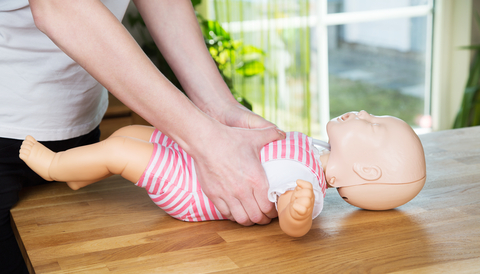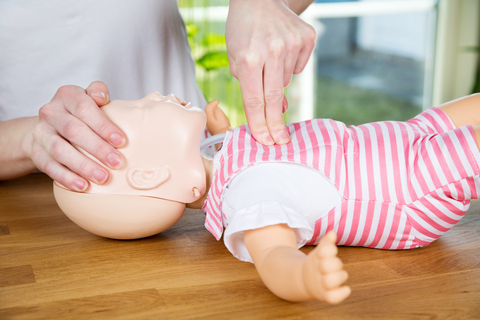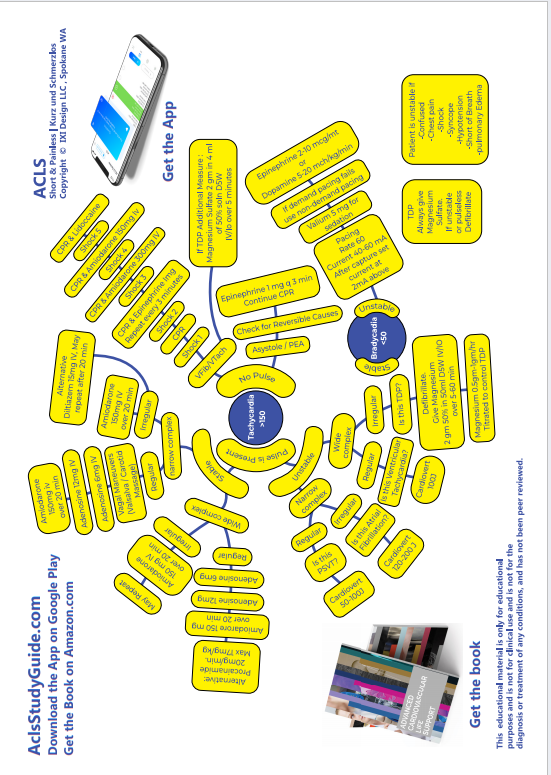
INFANT CPR ( < 1 year age)
Check for responsiveness
If infant is not responding:
Yell for someone to call EMS if anyone is around.
Check Brachial Pulse (do not use more than 5-10 seconds) and listen for breathing.
- Lay the infant supine on a firm surface
-
Perform 30 chest
compressions. Use two fingers and deliver the
compressions over the breastbone, just
below the nipple line. Depth of
compression is one and half inch deep.
Compression rate 100-120 per minute. Use
head tilt chin lift to open
airway. Give two
breaths, watch for chest rise. Each breath is
for one second.

-
If there are two rescuers, give 15 chest
compressions and 2 breaths each time.
See image to see the two handed grip,
using the thumbs to compress.

- Check pulse every 2 minutes (after five cycles of CPR).
- If infant not breathing, but there is a brachial pulse*, continue rescue breathing ; give one breath every 3-5 seconds.
- If infant not breathing, and there is no brachial pulse, continue alternating chest compressions and breaths. (30:2 if single rescuer, 15:2 if two rescuers) . Continue until ACLS available. If two minutes have passed and you have an AED / Defibrillator available, use it.
- While giving CPR remember to minimize any pauses to 10 seconds or less.
-
Once you have the AED available and he
still does not have a pulse, do the
following steps:
- Turn it ON
-
Attach the electrode pads to the
patient's chest. one pad is
placed over the front of the
chest and the other pad over the
back of the chest. This
antero-posterior placement is
best in infants and children.

- Press ANALYSE, Analyze the rhythm
- If the device advises shock (it advises shock only for Vfib)
- Stand clear
- SHOCK
- Resume CPR until prompted by AED to allow rhythm check
- After 2 minutes, the AED will start the cycle all over again.
- If it says "shock not advised", it means the rhythm is not Vfib, so we continue CPR
- Continue CPR until ACLS available / EMS arrives.
If a infant who is not breathing a pulse <60/mt is considered on par with NO pulse.
Agonal breaths are on par with no breathing.
Read Other Topics
Read All Pages
Ventricular Fibrillation
It this was an unwitnessed arrest, meaning it did not happen in front of you, you should give him 5 cycles of CPR...
Read More
Infant Cpr
Perform 30 chest compressions. Use two fingers and deliver the compressions over the breastbone, just below the nipple line...
Read More







